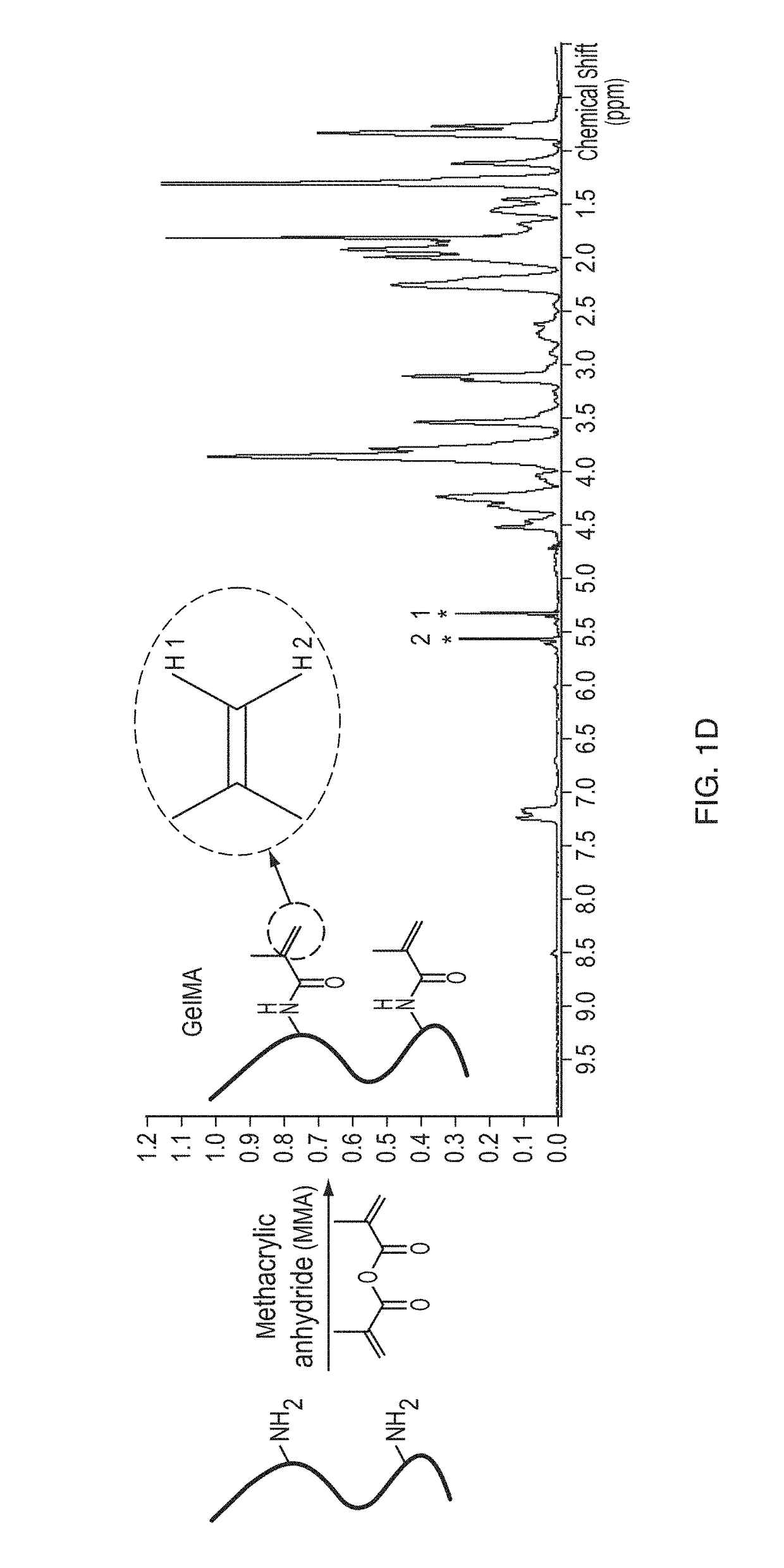Gelatin/Elastin Composites for Peripheral Nerve Repair
a technology of peripheral nerve and collagen, applied in the field of collagen/elastin composites can solve the problems of providing tunable mechanical properties and degradation rates for peripheral nerve repair, and achieve the effects of tunable mechanical properties and degradation rates, strong adhesion to neural tissues, and high ductility
- Summary
- Abstract
- Description
- Claims
- Application Information
AI Technical Summary
Benefits of technology
Problems solved by technology
Method used
Image
Examples
example
1. Introduction
[0057]Hydrogels were synthesized by photocrosslinking two naturally derived polymers, gelatin-methacryloyl (GelMA) and methacryloyl-substituted tropoelastin (MeTro). The mechanical properties of the composites can be tuned by varying the GelMA / MeTro ratio. GelMA / MeTro hydrogels exhibited 15-fold higher adhesive strength to nerve tissue, when compared to fibrin ex vivo. Furthermore, the composites were shown to support SC growth, as well as neurite extension and glial cell participation in vitro, which are essential for nerve regeneration. Subcutaneously implanted hydrogels exhibited high biocompatibility and slower degradation rates in vivo, as compared to pure GelMA, which highlights its potential to support the growth of slowly regenerating nerves. Thus, GelMA / MeTro composites may be used in the clinic, to regenerate nerves and reduce the need for sutures during nerve reconstruction.
[0058]It is desirable that a hydrogel adhesive for nerve tissue repair: 1) support t...
PUM
| Property | Measurement | Unit |
|---|---|---|
| Fraction | aaaaa | aaaaa |
| Fraction | aaaaa | aaaaa |
| Concentration | aaaaa | aaaaa |
Abstract
Description
Claims
Application Information
 Login to View More
Login to View More - R&D
- Intellectual Property
- Life Sciences
- Materials
- Tech Scout
- Unparalleled Data Quality
- Higher Quality Content
- 60% Fewer Hallucinations
Browse by: Latest US Patents, China's latest patents, Technical Efficacy Thesaurus, Application Domain, Technology Topic, Popular Technical Reports.
© 2025 PatSnap. All rights reserved.Legal|Privacy policy|Modern Slavery Act Transparency Statement|Sitemap|About US| Contact US: help@patsnap.com



